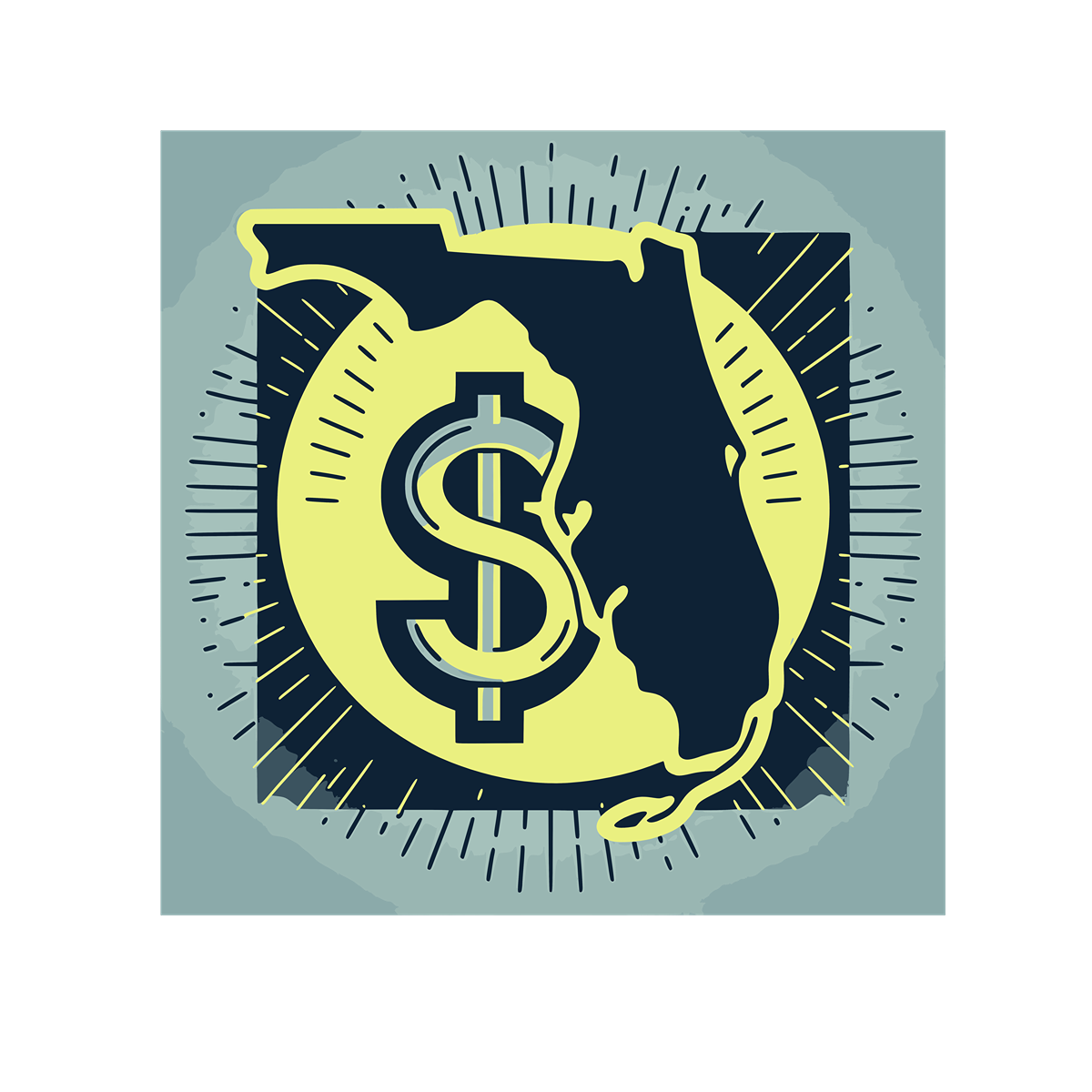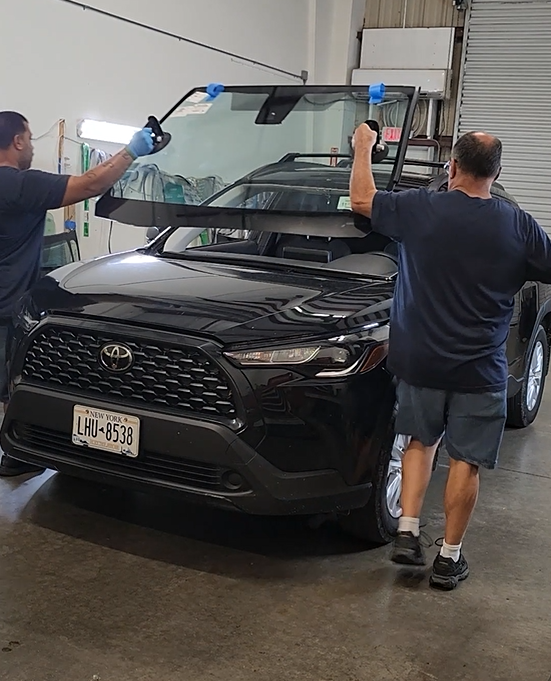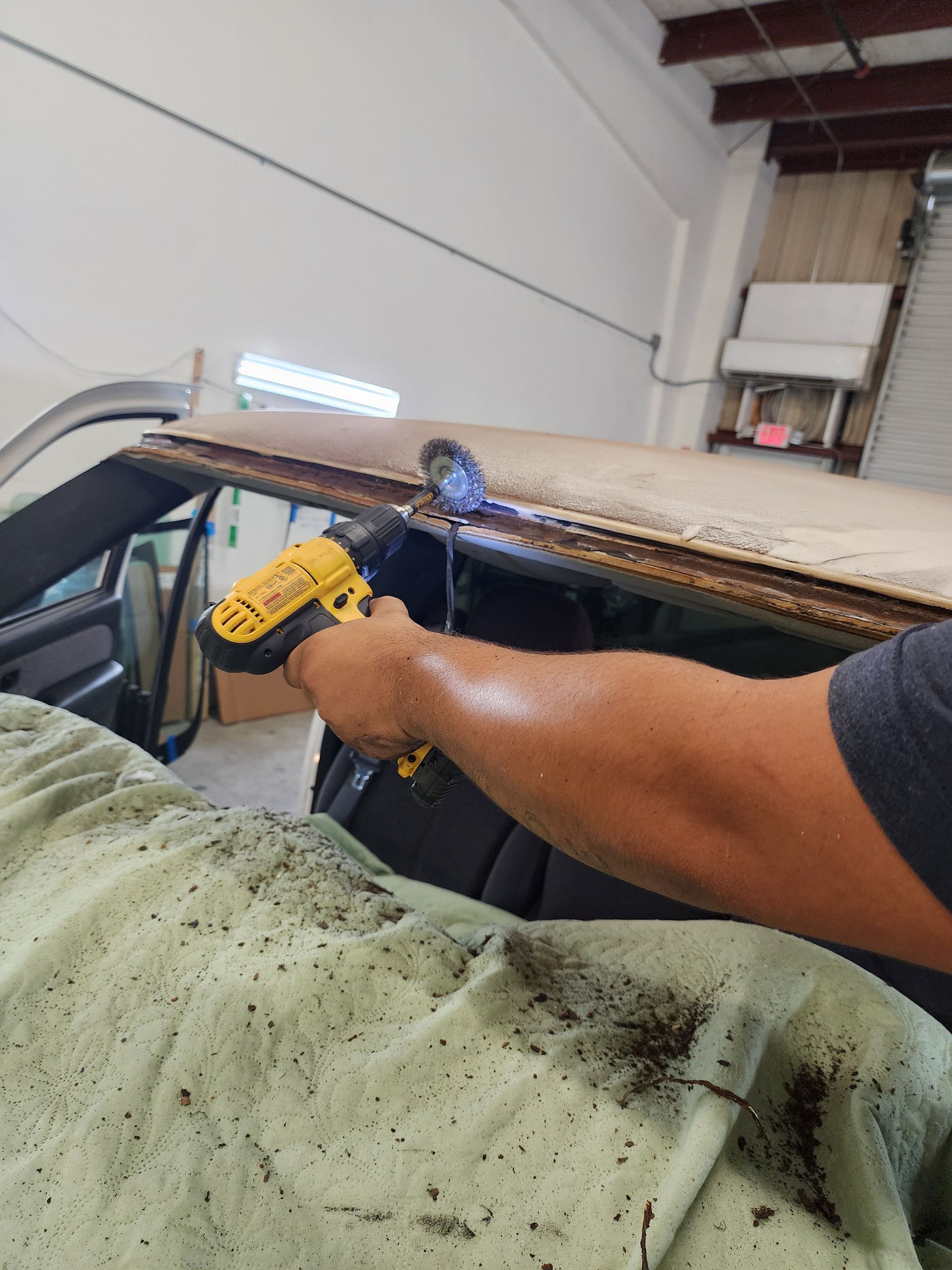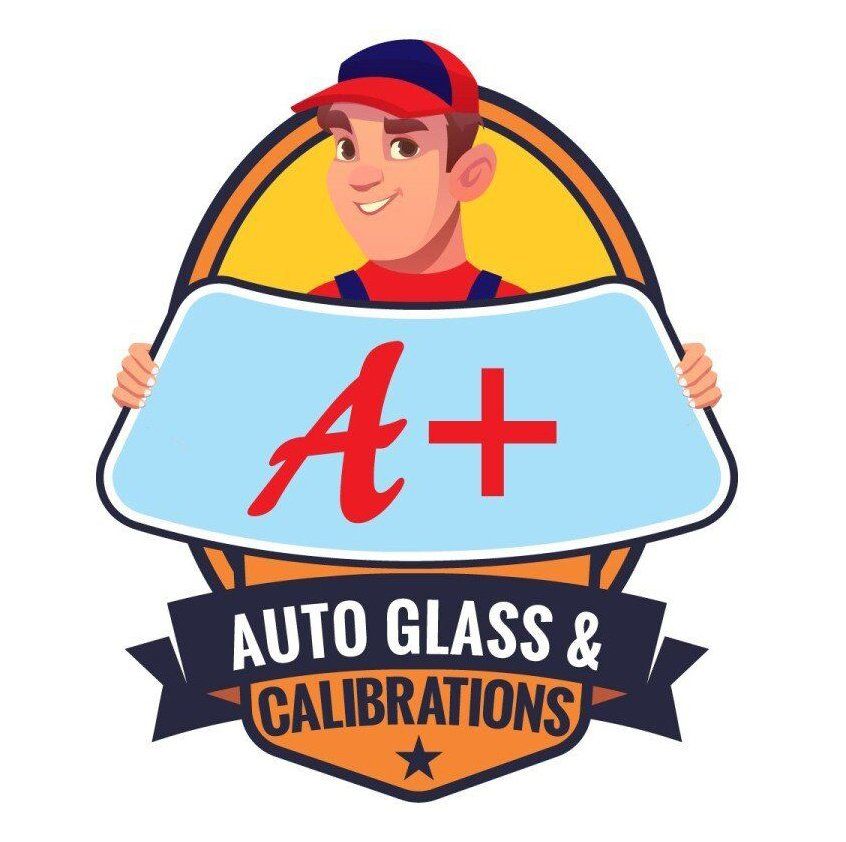APLUS BLOG

When you're out running errands, you might encounter someone offering to replace or repair your windshield right there in the parking lot. While this might seem like a convenient solution, these "mobile" auto glass services often come with risks that can cost you more in the long run. At A+ Auto Glass and Calibrations, we believe in providing high-quality, reliable service that keeps you and your passengers safe. Here’s why you should think twice before trusting a parking lot auto glass installer. 1. Potential Scams & High-Pressure Sales Tactics Many parking lot auto glass installers use aggressive sales tactics to convince you that your windshield needs immediate replacement. They might exaggerate minor chips or cracks, claim your insurance will cover everything, or even offer “free” repairs that turn into costly charges later. Some of these scams involve overbilling insurance companies, which can lead to increased premiums or even legal trouble. 2. Inferior Materials & Poor Workmanship Your windshield is a crucial safety feature in your vehicle, designed to protect you in the event of an accident. Reputable auto glass shops use high-quality materials and industry-approved adhesives to ensure a secure bond. However, many fly-by-night installers use cheap glass and low-quality adhesives that can lead to: Leaks that allow water and air into your car. Structural weaknesses that compromise the windshield’s ability to protect you in a collision. Wind noise and distortion that affects your driving experience. Improper installation can even cause your windshield to detach in an accident, putting your life at risk. 3. No Warranty or Accountability Legitimate auto glass businesses stand behind their work with a warranty. If something goes wrong, they will fix it at no extra cost. On the other hand, parking lot installers disappear once the job is done. If you experience issues with the glass or installation, you’re left with no recourse and may end up paying for another replacement sooner than expected. 4. Unlicensed and Uninsured Operators Many parking lot auto glass sellers operate without proper business licenses or insurance. This means: If they damage your car during installation, you have no way to hold them accountable. If the glass fails due to improper installation, you could be held liable in case of an accident. They may not follow state and federal safety regulations, putting you at risk. At A+ Auto Glass and Calibrations, we are fully licensed and insured, ensuring that your vehicle receives professional, safe, and legal service. 5. Risk of Insurance Fraud Some shady installers claim they will handle your insurance claim for you, but this often results in fraudulent charges or inflated invoices. In some cases, they might submit multiple claims under your name, leading to increased premiums or even insurance fraud investigations. A reputable auto glass shop will work with your insurance provider transparently, ensuring all claims are processed correctly and fairly. 6. Your Safety Is at Risk A windshield does more than protect you from wind and debris—it’s an essential structural component of your vehicle. It helps: Maintain the integrity of the roof in a rollover accident. Ensure airbags deploy correctly in a collision. Provide a clear, undistorted view of the road. An improperly installed windshield can fail when you need it most, increasing the risk of serious injury in an accident. 7. Legal Concerns In some areas, it is illegal for auto glass vendors to solicit services in parking lots. If you engage with an unauthorized installer, you might be participating in an unlawful transaction, which can lead to complications if you need to dispute a charge or file a claim. Choose a Trusted Auto Glass Expert Instead of taking risks with a parking lot installer, trust A+ Auto Glass and Calibrations for professional service, high-quality materials, and expert installation. Here’s why our customers choose us: ✔ Certified Technicians trained in proper windshield replacement and calibration. ✔ OEM & High-Quality Aftermarket Glass that meets or exceeds industry safety standards. ✔ Lifetime Warranty on our workmanship. ✔ Insurance Assistance to help you with claims honestly and transparently. ✔ Fast, Reliable Service that fits your schedule—without the risks. If your windshield needs repair or replacement, don’t settle for questionable parking lot services. Contact A+ Auto Glass and Calibrations today for a free quote and get the job done right! 📞 Call Us: [Your Contact Number] 🌐 Visit Us Online: www.aplusautoglass.biz 📍 Location: [Your Business Address] Your safety is our priority—trust the experts at A+ Auto Glass and Calibrations for professional auto glass services done right the first time.

In a world that constantly pushes us toward upgrading to the latest and greatest, it’s easy to fall into the trap of thinking we need a shiny new car every few years. However, holding on to your current vehicle can have significant financial, environmental, and practical benefits. If your current car or SUV is still in good condition, you might want to reconsider heading to the dealership. Here’s why: Financial Savings The cost of purchasing a new vehicle goes beyond the sticker price. Depreciation alone can take a huge bite out of your investment, with new cars losing up to 20% of their value in the first year. Additionally, financing, insurance premiums, and registration fees for a new car are typically much higher than those for a well-maintained older vehicle. By holding on to your current vehicle, you’ll avoid these expenses and can redirect that money toward other financial goals, such as saving for a house, paying off debt, or building your retirement fund. Environmental Impact Keeping your vehicle on the road longer also helps reduce your environmental footprint. Manufacturing new vehicles requires significant energy and resources, contributing to greenhouse gas emissions. By maintaining and driving your current car, you’re helping to reduce the demand for new vehicles and the environmental impact of their production. Practical Reliability Modern vehicles are built to last much longer than their predecessors, with proper care and maintenance. If your car is running well and fits your needs, there’s no pressing reason to replace it. Many people find that a well-cared-for vehicle can last 15-20 years or even longer. Tips for Extending the Life of Your Vehicle To maximize the lifespan of your vehicle and ensure it stays in top condition, follow these maintenance tips: 1. Stick to the Maintenance Schedule Consult your owner’s manual for the manufacturer’s recommended maintenance schedule. Regular oil changes, tire rotations, and fluid checks are crucial to keeping your vehicle running smoothly. 2. Keep It Clean Dirt, grime, and road salt can cause corrosion and damage to your vehicle’s exterior and undercarriage. Wash your car regularly and consider waxing it a few times a year to protect the paint. 3. Monitor Tire Health Check tire pressure regularly and ensure they’re inflated to the recommended levels. Properly inflated tires improve fuel efficiency and reduce wear and tear on the suspension system. Don’t forget to rotate your tires and replace them when the tread wears down. 4. Address Issues Promptly If you notice unusual noises, warning lights, or performance issues, address them immediately. Ignoring small problems can lead to bigger, costlier repairs down the line. 5. Drive Responsibly Aggressive driving, such as hard braking and rapid acceleration, can put unnecessary strain on your vehicle’s engine and components. Drive smoothly and avoid overloading your vehicle beyond its recommended capacity. 6. Store Your Vehicle Properly If you’re not driving your car regularly, store it in a garage or covered area to protect it from weather elements. Use a car cover if a garage isn’t available, and consider a battery maintainer to keep the battery charged. Breaking the Upgrade Mentality The pressure to upgrade to a newer vehicle is often driven by marketing and social norms rather than necessity. By shifting your mindset and focusing on maintaining your current vehicle, you can save money, reduce waste, and enjoy the reliability of a car you already know and trust. Holding on to your current vehicle isn’t just a smart financial move—it’s also a sustainable and practical choice. With proper care and maintenance, you can keep your car running well for years to come and avoid the unnecessary costs of a new vehicle. So, the next time you’re tempted by the allure of a shiny new car, think twice and consider all the benefits of sticking with the ride you already have.

Starting a small business is an exciting venture that requires careful planning and understanding of various legal and administrative processes. Florida, known for its favorable business climate and absence of state income tax, is an attractive location for entrepreneurs. This guide provides detailed steps and insights into starting a small business in the Sunshine State, including the necessary registrations based on business type and an overview of different business structures. Table of Contents Develop a Business Plan Choose a Business Structure Register Your Business Obtain Necessary Licenses and Permits Understand Tax Obligations Open a Business Bank Account Secure Funding Get Business Insurance Conclusion 1. Develop a Business Plan A well-crafted business plan serves as a roadmap for your business. It outlines your business goals, target market, competition analysis, marketing strategies, financial projections, and operational plans. A comprehensive business plan is also essential when seeking financing from banks or investors. Key Components: Executive Summary: A brief overview of your business concept. Business Description: Details about your products or services. Market Analysis: Research on industry trends and target customers. Organization and Management: Business structure and management team. Marketing and Sales Strategy: How you plan to attract and retain customers. Financial Projections: Revenue forecasts, budgeting, and funding requirements. 2. Choose a Business Structure Selecting the appropriate business structure is crucial as it affects your legal liability, taxation, and registration requirements. Below are the common business structures in Florida: a. Sole Proprietorship Description: Owned and operated by one individual. Liability: Owner has unlimited personal liability. Taxation: Business income is reported on the owner's personal tax return. Registration Requirements: Register a fictitious name (DBA) if operating under a name different from the owner's legal name. b. Partnership Description: Owned by two or more individuals. Types: General Partnership (GP), Limited Partnership (LP), and Limited Liability Partnership (LLP). Liability: Varies by type; general partners have unlimited liability, while limited partners have liability up to their investment. Taxation: Pass-through taxation; profits and losses are reported on partners' personal tax returns. Registration Requirements: File a partnership agreement and register with the Florida Department of State. c. Limited Liability Company (LLC) Description: Hybrid structure offering the liability protection of a corporation with the tax benefits of a partnership. Liability: Members are generally not personally liable for business debts. Taxation: Can choose pass-through taxation or be taxed as a corporation. Registration Requirements: File Articles of Organization with the Florida Division of Corporations and appoint a registered agent. d. Corporation Types: C Corporation and S Corporation. Description: A separate legal entity owned by shareholders. Liability: Shareholders have limited liability. Taxation: C Corporation: Subject to corporate tax rates; possibility of double taxation on dividends. S Corporation: Pass-through taxation; must meet IRS eligibility criteria. Registration Requirements: File Articles of Incorporation with the Florida Division of Corporations, appoint a registered agent, and comply with corporate formalities like holding annual meetings. 3. Register Your Business Once you've chosen a business structure, the next step is registration. a. Register with the Florida Division of Corporations LLCs and Corporations: File the necessary formation documents (Articles of Organization or Articles of Incorporation). Partnerships: File a partnership agreement and register if required. Sole Proprietorships: Register a fictitious name if operating under a name other than your legal name. Resources: Florida Division of Corporations Website: www.sunbiz.org Fictitious Name Registration: Required for businesses operating under a name different from the legal name. b. Obtain an Employer Identification Number (EIN) Purpose: Used for tax reporting purposes. Requirement: Mandatory for corporations, partnerships, and LLCs with more than one member; recommended for sole proprietors hiring employees. How to Apply: Obtain an EIN for free from the IRS website. 4. Obtain Necessary Licenses and Permits Depending on your business type and location, you may need various licenses and permits. a. State Licenses Regulated Industries: Certain professions (e.g., real estate agents, contractors) require state licenses. Agency: Florida Department of Business and Professional Regulation (DBPR). b. Local Licenses County and City Requirements: Business Tax Receipts (formerly known as occupational licenses) may be required. Zoning and Land Use Permits: Ensure your business location complies with local zoning laws. c. Federal Licenses Applicable for: Businesses regulated by federal agencies (e.g., firearms, alcohol, aviation). Tip: Check with local city and county offices for specific requirements. 5. Understand Tax Obligations Complying with tax laws is essential to avoid penalties. a. State Taxes Sales Tax: Register with the Florida Department of Revenue if selling taxable goods or services. Reemployment Tax: Required if you have employees. b. Federal Taxes Income Tax: Based on your business structure, file the appropriate federal income tax forms. Payroll Taxes: Withhold and pay Social Security and Medicare taxes for employees. c. Annual Reports Requirement: LLCs and corporations must file annual reports with the Florida Division of Corporations. Deadline: Between January 1 and May 1 each year. Fee: Varies by business structure. 6. Open a Business Bank Account Separating personal and business finances is crucial. Benefits : Simplifies accounting. Enhances professionalism. Protects personal assets. Requirements: EIN: Employer Identification Number. Formation Documents: Articles of Organization or Incorporation. Business Licenses: Any applicable licenses or permits. 7. Secure Funding Evaluate your financial needs and explore funding options. a. Self-Funding Personal Savings: Using your own funds to start the business. Pros: Full control over your business. Cons: Personal financial risk. b. Loans Banks and Credit Unions: Traditional loans may require collateral. Small Business Administration (SBA) Loans: Government-backed loans with favorable terms. c. Investors Angel Investors: Individuals who provide capital for a startup. Venture Capitalists: Firms that invest in businesses with high growth potential. d. Grants Availability: Limited but worth exploring, especially for minority-owned or women-owned businesses. 8. Get Business Insurance Protect your business from unforeseen risks. a. General Liability Insurance Covers: Bodily injury, property damage, and personal injury claims. b. Professional Liability Insurance Covers: Claims related to professional services (errors and omissions). c. Workers' Compensation Insurance Requirement: Mandatory in Florida if you have four or more employees. d. Commercial Property Insurance Covers: Damage to your business property from events like fire or theft. Tip : Consult with a licensed insurance agent to determine the appropriate coverage. Conclusion Starting a small business in Florida involves several critical steps, from planning and choosing the right business structure to registering your business and understanding your tax obligations. By following this comprehensive guide, you can navigate the process with confidence and set a solid foundation for your entrepreneurial journey. Remember : Always consult with legal, financial, and tax professionals to ensure compliance with all laws and regulations. Helpful Resources: Florida Division of Corporations: www.sunbiz.org Florida Department of Revenue: floridarevenue.com Florida Department of Business and Professional Regulation: www.myfloridalicense.com Internal Revenue Service (IRS): www.irs.gov Small Business Administration (SBA): www.sba.gov

Driving in Inclement Weather: Staying Safe on the Road Driving in bad weather can be dangerous, even for the most experienced drivers. Whether it's rain, snow, or extreme winds, weather conditions can change in an instant, affecting visibility and road conditions. In this guide, we’ll break down the best practices for driving in various types of inclement weather to help keep you safe on the road. 1. Driving in Hurricanes Hurricanes are powerful storms that bring a combination of heavy rain, strong winds, flooding, and even tornadoes. Here's how to handle the road during hurricane conditions: Before You Hit the Road: Avoid driving during a hurricane if possible. In many cases, authorities will issue evacuation orders or warnings. Always heed these alerts. Keep your gas tank full before the storm hits. Gas stations may be closed or out of fuel after a hurricane. Check your route for road closures due to flooding or debris. While Driving: Flooded Roads: Never attempt to drive through standing or moving water. Just six inches of water can cause a vehicle to lose control, and deeper water may carry your car away. Winds: If you must drive, reduce your speed and be mindful of sudden gusts of wind that can push your vehicle off course. Keep both hands on the wheel and stay in the center of your lane. Visibility: Use your headlights to improve your visibility to others, and keep your windshield wipers in good working condition. 2. Driving in Light and Heavy Rain Rain is one of the most common types of bad weather drivers face. It may seem less threatening than other conditions, but it still requires careful attention, especially in heavy downpours. Light Rain: Slippery Roads: Even a small amount of rain can make roads slick, especially after a dry spell when oil from vehicles builds up on the surface. Braking Distance: Increase your following distance to allow more room to stop if the vehicle ahead brakes suddenly. Heavy Rain: Hydroplaning: This occurs when water builds up between the tires and the road, causing the vehicle to lose traction. If you feel your car hydroplaning, ease off the gas and steer straight. Do not slam on the brakes. Visibility: Heavy rain can severely reduce visibility. Use low-beam headlights and drive slower than usual. If you can’t see the car ahead, consider pulling over to a safe spot until the rain lightens. 3. Driving in Fog Fog can be one of the most disorienting weather conditions, reducing visibility to mere feet in front of your vehicle. Key Tips for Driving in Fog: Low-Beam Headlights: Always use your low-beam headlights in foggy conditions. High beams can reflect off the fog, making it even harder to see. Slow Down: Reduce your speed, as fog can hide hazards such as stopped cars or road obstructions. Use Fog Lights (if available): Many vehicles are equipped with fog lights designed to illuminate the road directly in front of the car, improving visibility. Listen: Roll down your windows slightly to listen for cars or emergency vehicles that you may not be able to see. 4. Driving in Hail Hailstones, which can range from pea-sized to as large as baseballs, can cause significant damage to vehicles and obscure your vision. When Driving in Hail: Pull Over: If hail becomes too heavy, the best option is to pull over to a safe location, like under a bridge or into a parking garage, to avoid damage to your car and maintain visibility. Protect Your Windshield: Angle your car so the hail hits the rear windshield, which is often stronger than the front. Slow Down: If continuing to drive, reduce your speed. Hail can cause your tires to lose traction and make the road slippery. 5. Driving in High Winds High winds are especially dangerous for high-profile vehicles, such as trucks, vans, and SUVs, but they can affect any vehicle by pushing it off course. Key Tips for High Winds: Keep Both Hands on the Wheel: This will help you maintain control if a sudden gust hits your vehicle. Stay Clear of Large Vehicles: Larger vehicles are more prone to swaying in high winds and may drift into other lanes unexpectedly. Watch for Flying Debris: Be alert for branches, signs, or other debris that may blow onto the road. Slow Down: Wind resistance increases the faster you drive, so reducing speed helps maintain control. 6. Driving in Snow Snow and ice can quickly turn the road into a slippery hazard, making driving conditions very dangerous. Key Tips for Driving in Snow: Prepare Your Vehicle: Make sure your car has good tires, properly working brakes, and plenty of windshield wiper fluid. Carry emergency supplies like blankets, water, and a flashlight. Slow Down: Reduce your speed significantly and keep a greater following distance between you and the car ahead. Brake Gently: Avoid slamming on the brakes, as this can cause you to skid. Instead, apply gentle pressure to avoid losing traction. Use Snow Tires or Chains (if necessary): In areas prone to heavy snow, snow tires or tire chains provide additional grip. Stay on Main Roads: If possible, stick to well-traveled roads that are more likely to be plowed and treated with salt or sand. 7. Driving During a Tornado Tornadoes are extremely dangerous and can develop with little warning, making it crucial to understand how to respond if you encounter one while driving. Key Tips for Tornado Conditions: Do Not Try to Outrun the Tornado: Tornadoes move unpredictably and can change direction quickly. Trying to outrun one is incredibly dangerous. Seek Shelter: If a tornado is visible, your priority should be to get to a safe location. Overpasses or bridges are not safe; instead, seek a sturdy building. If You’re Trapped in Your Car: If no shelter is available, keep your seatbelt on, duck below the window line, and cover your head with a blanket or jacket. Avoid staying under large objects like trees or power lines. Conclusion Driving in inclement weather requires extra caution, patience, and preparedness. Knowing what to do in specific weather conditions can make the difference between a safe journey and a dangerous situation. Always remember, if conditions are too severe, the safest choice may be to stay off the road entirely. At A+ Auto Glass and Calibrations , we care about you! Alwas drive safe and sober!

When considering factors that influence your vehicle’s fuel efficiency, the windshield might not be the first thing that comes to mind. However, a properly installed windshield can significantly impact gas mileage, while an improperly installed one can lead to a variety of issues, including reduced fuel efficiency, leaks, and increased cabin noise. Here’s how windshield installation plays a crucial role in your vehicle’s overall performance. The Role of Windshield in Aerodynamics A vehicle’s aerodynamics, which refers to how air flows around it, greatly affects its fuel efficiency. The windshield is a critical component of this aerodynamic design. A well-installed windshield fits seamlessly with the vehicle’s body, ensuring smooth airflow and reducing air resistance. Improved Fuel Efficiency : When the windshield is properly aligned and sealed, it helps maintain the aerodynamic profile of the vehicle. This reduces drag, allowing the vehicle to cut through the air more efficiently and use less fuel. Structural Integrity : A correctly installed windshield contributes to the vehicle's structural integrity. This stability ensures that all parts of the vehicle work in harmony, leading to better overall performance, including fuel efficiency. The Impact of Improper Windshield Installation Conversely, an improperly installed windshield can create a host of problems that negatively affect your vehicle's performance. Increased Air Resistance : A windshield that is not properly aligned or sealed can disrupt the vehicle's aerodynamics. This misalignment increases drag, forcing the engine to work harder and consume more fuel, thereby reducing gas mileage. Leaks : Poor installation can leave gaps between the windshield and the vehicle’s frame. These gaps can lead to water leaks during rain or car washes. Moisture entering the vehicle can damage the interior and potentially affect electronic components, leading to costly repairs. Increased Noise: Air can enter through improperly sealed gaps, causing increased wind noise inside the cabin. This not only makes for an uncomfortable driving experience but can also be a sign of more significant issues with the windshield installation. Safety Concerns : A windshield that is not properly installed may not stay in place during a collision, compromising the vehicle's safety. This can lead to greater injury risk for passengers and additional damage to the vehicle. Ensuring Proper Windshield Installation To avoid the pitfalls of improper windshield installation, it’s essential to choose a reputable auto glass shop with certified technicians. Here are a few tips: Certification and Training : Ensure the technicians are certified by reputable organizations, such as the Auto Glass Safety Council (AGSC). Certified technicians have the training and expertise to install windshields correctly. Quality Materials : Choose a shop that uses high-quality OEM (Original Equipment Manufacturer) glass. OEM glass is designed to match your vehicle’s specifications, ensuring a proper fit. Post-Installation Inspection : After installation, conduct a thorough inspection. Check for proper alignment, sealing, and any signs of gaps or imperfections. Reputable shops will also perform their quality checks to ensure the windshield is installed correctly. Conclusion A properly installed windshield is more than just a piece of glass; it’s a vital component that contributes to your vehicle's aerodynamics, fuel efficiency, and overall safety. By ensuring your windshield is installed correctly, you can enjoy better gas mileage, avoid leaks and noise, and maintain the structural integrity of your vehicle. Always choose a reputable auto glass shop like A+ Auto Glass and Calibrations to handle your windshield needs, and don’t compromise on quality. Your vehicle and your wallet will thank you. #autoglass #windshield #certifiedautoglass

When it comes to maintaining the safety and integrity of your vehicle, choosing the right auto glass and calibration shop is crucial. Whether you're dealing with a minor chip or a full windshield replacement, understanding what to expect can help ensure you receive the best service possible. Here's what to look for in an auto glass and calibration shop. Certification and Training First and foremost, ensure the shop employs certified technicians. We are Sika Trained and certified, as well as being certified and trained Autel technicians (calibrations). All of our technicians have undergone rigorous training and adhere to the best practices in the industry, ensuring your vehicle's glass is installed correctly and safely. Advanced Driver Assistance Systems (ADAS) Calibration Modern vehicles often come equipped with Advanced Driver Assistance Systems (ADAS), such as lane departure warning, adaptive cruise control, and automatic emergency braking. These systems rely on cameras and sensors mounted on your windshield. Therefore, after any windshield replacement, it's essential to recalibrate these systems to ensure they function correctly. Choose a shop that offers ADAS calibration as part of their services. The shop should use the latest calibration equipment and techniques to restore your vehicle's safety features to their original settings. Quality of Materials OEM (Original Equipment Manufacturer) Equivalent glass is made to match the specifications of your vehicle's original glass, providing the best fit and performance. Insurance companies generally will not pay for OEM materials for vehicles more than one model year old. Always inquire about the type of glass the shop uses and opt for best caliber of glass available. Warranty and Guarantees A reputable auto glass and calibration shop will stand behind their work. Look for a shop that offers a warranty on both the glass and the labor. This guarantee provides peace of mind, knowing that if there are any issues with the installation, the shop will address them without additional cost to you. Customer Service and Convenience Excellent customer service is a hallmark of any good auto glass shop. The staff should be knowledgeable, friendly, and willing to answer any questions you have. Additionally, consider the shop's convenience factors: do they offer mobile services to come to your location? What are their hours of operation? Can they accommodate your schedule? Insurance Assistance Dealing with insurance can be one of the most daunting aspects of auto glass replacement. A top-notch auto glass shop will assist you with the insurance claim process. They should have experience working with various insurance companies and be able to guide you through the necessary steps, ensuring you receive the coverage you're entitled to. Many insurance policies cover auto glass repair and replacement, often with little to no out-of-pocket cost. However, it's crucial to understand your policy details. The shop should help verify your coverage and inform you of any potential costs upfront, preventing any unpleasant surprises. Reviews and Reputation Finally, always check the shop's reputation. Online reviews on platforms like Google, Yelp, and the Better Business Bureau can provide valuable insights into the experiences of past customers. Look for a shop with consistently high ratings and positive feedback regarding their workmanship, customer service, and overall experience. Conclusion Choosing the right auto glass and calibration shop is vital for maintaining your vehicle's safety and functionality. By considering factors such as technician certification, ADAS calibration capabilities, quality of materials, warranty offerings, customer service, insurance assistance, and the shop's reputation, you can make an informed decision. Remember, investing in quality auto glass repair and calibration today can save you from potential safety hazards and costly repairs down the road. Always prioritize your safety and peace of mind by choosing a reputable and reliable auto glass and calibration shop. Your vehicle and its advanced safety features are worth it.





